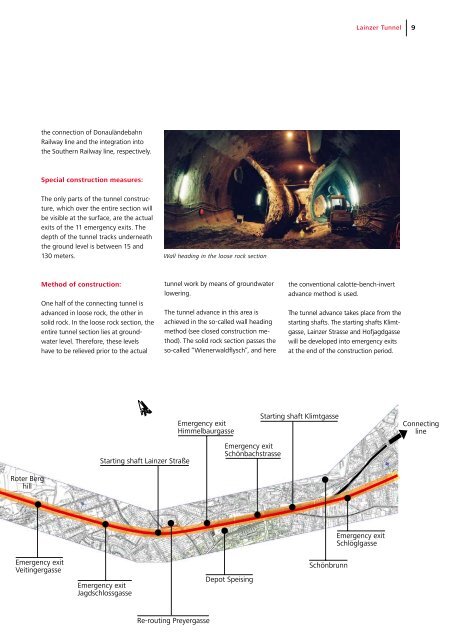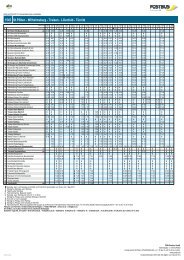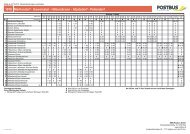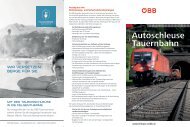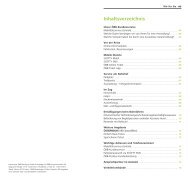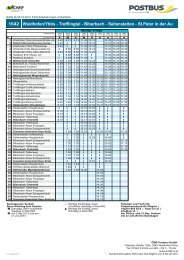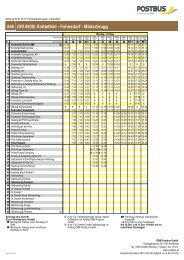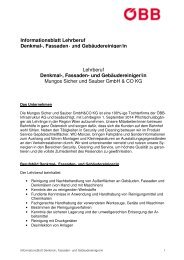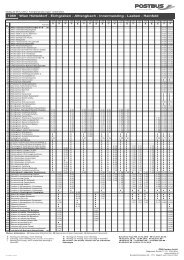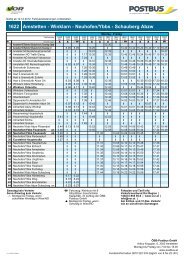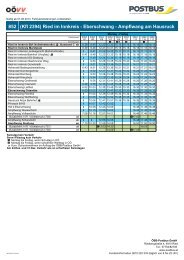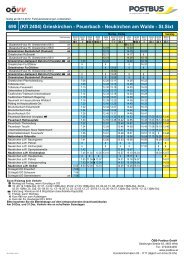Lainzer Tunnel
Lainzer Tunnel
Lainzer Tunnel
Create successful ePaper yourself
Turn your PDF publications into a flip-book with our unique Google optimized e-Paper software.
the connection of Donauländebahn<br />
Railway line and the integration into<br />
the Southern Railway line, respectively.<br />
Special construction measures:<br />
The only parts of the tunnel constructure,<br />
which over the entire section will<br />
be visible at the surface, are the actual<br />
exits of the 11 emergency exits. The<br />
depth of the tunnel tracks underneath<br />
the ground level is between 15 and<br />
130 meters.<br />
Method of construction:<br />
One half of the connecting tunnel is<br />
advanced in loose rock, the other in<br />
solid rock. In the loose rock section, the<br />
entire tunnel section lies at groundwater<br />
level. Therefore, these levels<br />
have to be relieved prior to the actual<br />
Wall heading in the loose rock section<br />
tunnel work by means of groundwater<br />
lowering.<br />
The tunnel advance in this area is<br />
achieved in the so-called wall heading<br />
method (see closed construction method).<br />
The solid rock section passes the<br />
so-called “Wienerwaldflysch”, and here<br />
<strong>Lainzer</strong> <strong>Tunnel</strong> 9<br />
the conventional calotte-bench-invert<br />
advance method is used.<br />
The tunnel advance takes place from the<br />
starting shafts. The starting shafts Klimtgasse,<br />
<strong>Lainzer</strong> Strasse and Hofjagdgasse<br />
will be developed into emergency exits<br />
at the end of the construction period.


